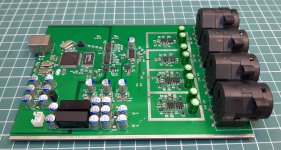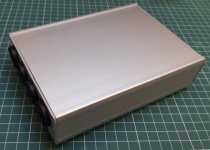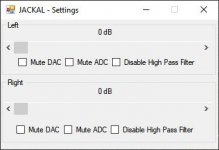Hello,
I want to present you my project of sound card for audio measurements.
I started this project after i destroyed 3 sound cards and i wanted to have something that i can easily fix if something goes wrong.
Device is based on CM6631A USB digital interface with custom firmware and cheap audio codec CS4272.
Clock is generated by CM6631A, I2S OUT is in master mode and I2S INPUT is in slave mode.
All digital connections between CM6631A and CS4272 (I2S and I2C) are isolated as well as power supply.
Power supply is based on isolated DC-DC converters alongside with low noise LDO. Device need separate 5V 700ma power supply.
I have implemented some custom HID handlers in CM6631A software so i can change settings of CS4272 from Windows with my application.
Analog outputs and inputs are differential, so i can connect my autoranger device without generating too much additional noise and distortions.
Distortions can be reduced if i use different way of setting VCOM in OPA1632 buffers and not using VCOM from CS4272.
I want to present you my project of sound card for audio measurements.
I started this project after i destroyed 3 sound cards and i wanted to have something that i can easily fix if something goes wrong.
Device is based on CM6631A USB digital interface with custom firmware and cheap audio codec CS4272.
Clock is generated by CM6631A, I2S OUT is in master mode and I2S INPUT is in slave mode.
All digital connections between CM6631A and CS4272 (I2S and I2C) are isolated as well as power supply.
Power supply is based on isolated DC-DC converters alongside with low noise LDO. Device need separate 5V 700ma power supply.
I have implemented some custom HID handlers in CM6631A software so i can change settings of CS4272 from Windows with my application.
Analog outputs and inputs are differential, so i can connect my autoranger device without generating too much additional noise and distortions.
Distortions can be reduced if i use different way of setting VCOM in OPA1632 buffers and not using VCOM from CS4272.



